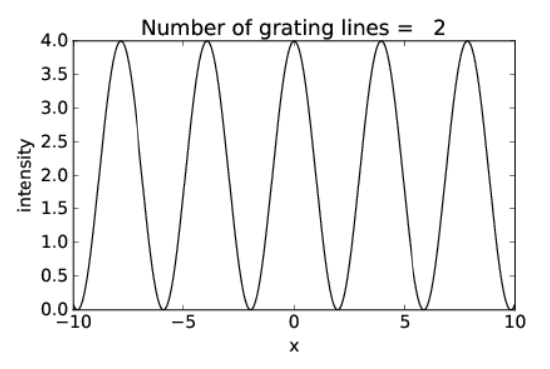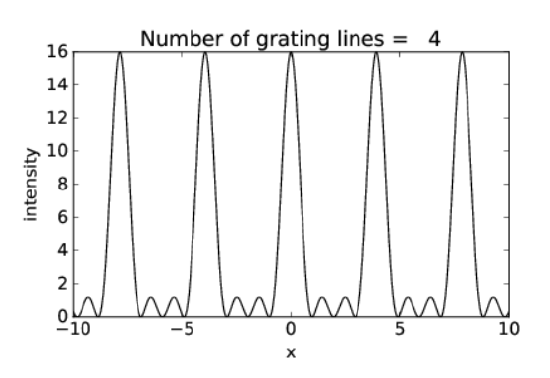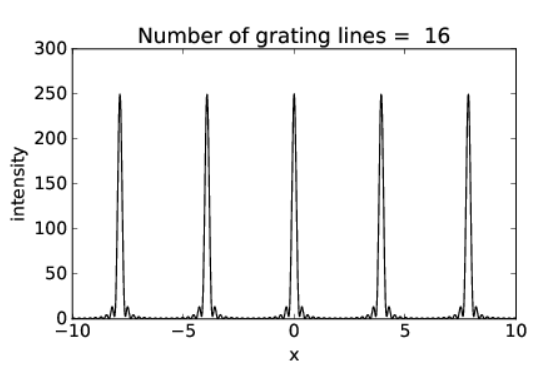2.6: Diffraction Gratings
( \newcommand{\kernel}{\mathrm{null}\,}\)
Since the angular spacing Δθ of interference peaks in the two slit case depends on the wavelength of the incident wave, the two slit system can be used as a crude device to distinguish between the wavelengths of different components of a non-sinusoidal wave impingent on the slits. However, if more slits are added, maintaining a uniform spacing d between slits, we obtain a more sophisticated device for distinguishing beam components. This is called a diffraction grating.



Figures 2.17-2.19 show the intensity of the diffraction pattern as a function of position x on the display screen (see Figure 2.6.16:) for gratings with 2, 4, and 16 slits respectively, with the same slit spacing. Notice how the interference peaks remain in the same place but increase in sharpness as the number of slits increases.
The width of the peaks is actually related to the overall width of the grating, w=nd, where n is the number of slits. Thinking of this width as the dimension of a large single slit, the single slit equation, amax=λ/(2w), tells us the angular width of the peaks.
Whereas the angular width of the interference peaks is governed by the single slit equation, their angular positions are governed by the two slit equation. Let us assume for simplicity that |θ|<1 so that we can make the small angle approximation to the two slit equation, mλ=dsinθ≈dθ, and ask the following question: How different do two wavelengths differing by Δλ have to be in order that the interference peaks from the two waves not overlap? In order for the peaks to be distinguishable, they should be separated in θ by an angle Δθ=mΔλ/d, which is greater than the angular width of each peak, αmax:
Δθ>αmax
Substituting in the above expressions for Δθ and αmax and solving for Δλ, we get Δλ>λ/(2mn), where λ is the average of the two wavelengths and n=w∕d is the number of slits in the diffraction grating. Thus, the fractional difference between wavelengths which can be distinguished by a diffraction grating depends solely on the interference order m and the number of slits n in the grating:
Δλλ>12mn


